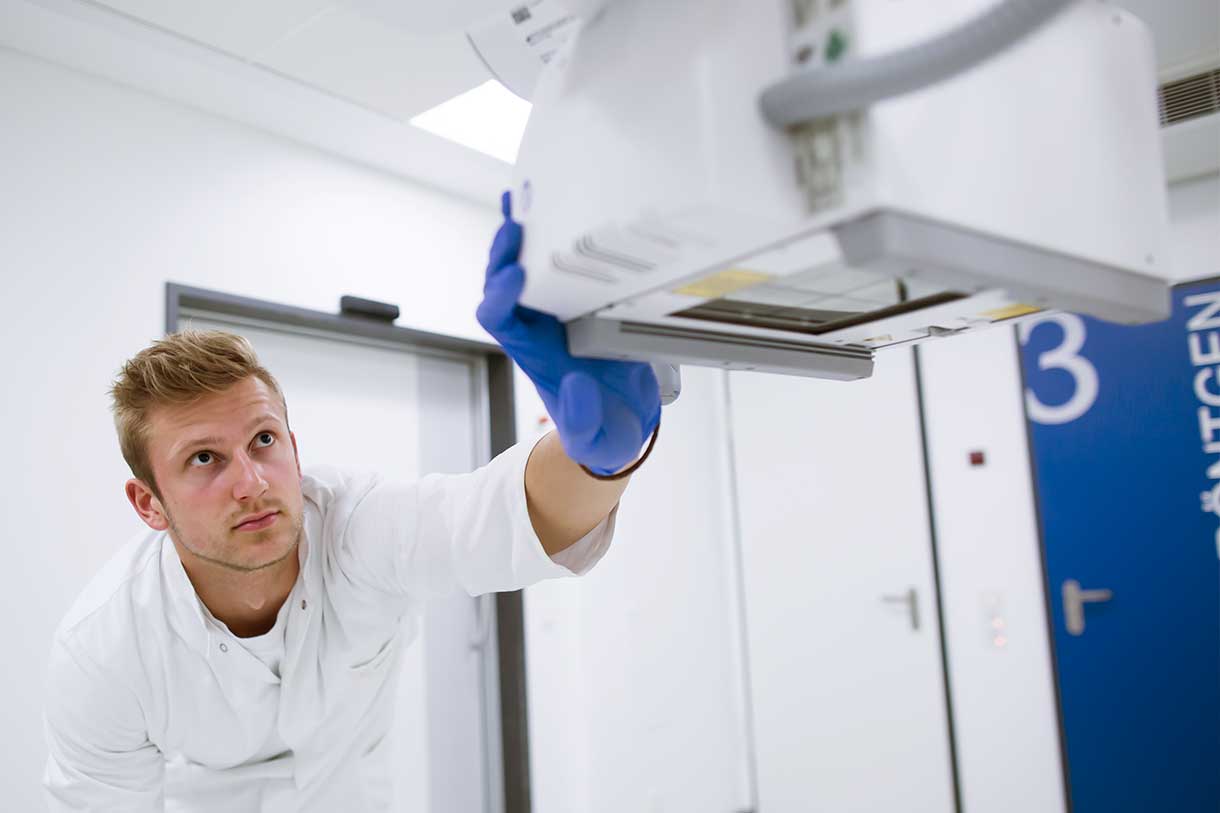Inhaltsverzeichnis | Sommaire
In the first two parts of our blog series, we presented the concept of Just Culture as a fair and learning-promoting approach to patient safety and error management in healthcare. We learned that this approach creates a balance between learning culture and responsibility (Marx, 2001) and we learned the crucial distinction between human error, risky and reckless behavior. But how can the step from this theoretical insight to lived practice be achieved in the hectic everyday life of hospitals, clinics, care facilities and other healthcare organizations?
The central challenge for the Swiss healthcare system, especially for error management in the healthcare sector, is not to understand the concept, but to implement it sustainably. How do acute care hospitals, rehabilitation clinics, nursing homes, home care organisations and doctors’ surgeries break through the often deep-rooted culture of blame culture and establish a real just culture? How do managers create the psychological security that employees need to talk openly about mistakes, near misses and risks – without fear of negative consequences?
This third article highlights the practical steps of implementing an effective error or learning and reporting culture and shows what challenges you can expect and how you can master them in the context of effective error and quality management. One thing becomes clear: Just Culture is not a project with a deadline, but a continuous cultural change that requires consistent commitment at all levels – from management to bedside care.
Leadership Commitment: Change starts at the top
Without authentic and visible commitment from the management level, Just Culture cannot succeed. This is also shown by the feasibility study by Leibold and Fridrich (2024) on Just Culture in the Swiss Healthcare System, conducted on behalf of the Swiss Patient Safety Foundation and the Federal Office of Public Health (FOPH): Only when hospital management, chief physicians, nursing service managers and home managers credibly exemplify the principles of the culture of responsibility can trust be created among employees – a basic prerequisite for effective error management in the healthcare system.
Authentic leadership commitment means much more than occasional lip service in quality circles or management meetings. It manifests itself in four concrete dimensions, which are based on the findings of Dekker (2012) and Marx (2001) on a fair culture in the health care system and thus have a direct influence on patient safety:
- Clear and repeated communicationof the Just Culture principles across all channels is needed. Managers must repeatedly convey that the organization consciously refrains from pure blame and instead relies on systemic learning and a constructive learning culture (Reason, 1997). These messages need to be anchored in team meetings, internal newsletters, quality reports, and face-to-face conversations.
- Role model functionis crucial. When managers themselves talk openly about their own mistakes and use them as learning opportunities for the entire organization, they send a powerful signal. A chief physician who addresses his own error in thinking in a morning report, or a nursing service manager who reflects on a suboptimal decision in duty planning, creates more trust than a hundred glossy presentations about error management and patient safety.
- Concrete resourcesmust be made available for quality and risk management: sufficient time for thorough case analyses of incidents and adverse events, financial resources for system improvements and the implementation of professional reporting systems. Depending on the size and needs of the organization, various solutions are available:
H-CIRS Professional for large hospitals and clinics with complex requirements,H-CIRS Starter for smaller institutions looking for a cost-efficient entry, orH-CIRS Community for the networking of several institutions in the sense of joint learning. All systems have been specially developed for the requirements of the Swiss healthcare system and take into account the requirements of the KVG (Health Insurance Act).
- Cultural change needs a long-term perspective. The development of a mature safety culture takes months and years, not weeks. Managers in Swiss hospitals, clinics and care facilities must have the patience to accompany this process – even if there are setbacks (Dekker, 2012).
Practical tip for Swiss managers: Regularly question your own decisions according to Just Culture principles: “Would my response to this incident strengthen or weaken the trust of my employees? Do I promote the willingness to report or do I inhibit it?” This reflection is a central component of professional error management in the healthcare sector and supports patient safety at all levels.
Psychological safety: At the heart of Just Culture
The term psychological safety, coined by the research of Amy Edmondson (2018), describes the belief of team members that they can take interpersonal risks without fear of negative consequences. In the context of patient safety in the Swiss healthcare system, this means that employees must feel confident in reporting errors, reporting near misses, expressing concerns or making suggestions for improvement – regardless of their position in the often strong hierarchy. This openness is the basis for successful error management in the healthcare sector and thus for sustainable patient safety.
Psychological safety does not arise through declarations of intent in mission statements, but through concrete measures on a structural, communicative and procedural level. Structurally, anonymous reporting channels such as the H-CIRS system help to significantly lower the threshold for reporting critical events and near misses. For smaller facilities or medical practices, H-CIRS Starter is a low-threshold entry. An open-door policy of managers and regular feedback rounds without hierarchical pressure further reinforce this effect. Such systems and communication structures promote patient safety and enable learning-oriented error management in the healthcare system that identifies and remedies risks at an early stage.
In terms of communication, active listening is central as a leadership skill (Edmondson, 2018). Appreciative language, open questions instead of accusations and positive reinforcement for every report – regardless of the content – signal that transparency and an open reporting culture are desired as part of error management in the healthcare system. In terms of processes, clear processes for processing reports within the framework of the Critical Incident Reporting System (CIRS) and transparent criteria for decisions create the necessary trust. Employees must be able to understand how their report is processed and what system improvements result from this – a significant contribution to patient safety.
A practical example from a Swiss acute care hospital: After implementing a CIRS system for error management, the number of reports initially increased at all. It was only when the hospital management began to present concrete system improvements resulting from reports in monthly town halls and to thank the reporters (anonymously) that the willingness to report tripled within six months. The error culture changed noticeably.
Measuring success: Psychological safety can be measured – Employee surveys on psychological safety, the number and quality of CIRS reports, and openness in team meetings are measurable indicators of a functioning safety culture. Systems such as H-FEEDBACK can provide valuable data here.
Competence building: training for all levels
The principles of Just Culture must not only be understood, but also applied in practice – be it in the emergency room, in the intensive care unit, in the operating room, in a nursing home or at Spitex. A systematic educational programme on the topic of error management in the healthcare sector and patient safety is therefore indispensable and should address different target groups in the Swiss healthcare system (Marx, 2001).
For all employees – from doctors to nursing to administration – basic training is required, which teaches the basics in two to four hours: What is Just Culture and how does it differ from the traditional Blame Culture? How do we distinguish human error from risky and reckless behavior? What responsibility do I have for safe action and transparent reporting of incidents? These trainings should work with practical examples from the respective field of work and train the use of the institutional reporting system – be it H-CIRS Professional for large organizations or H-CIRS Starter for smaller institutions.
Managers in hospitals, clinics, nursing homes and home care organisations need in-depth training of one to two days that focus on the fair incident analysis process, coaching techniques in dealing with risky behaviour and creating psychological safety (Edmondson, 2018). Such management training courses are a decisive lever for sustainable patient safety and professional error management in the healthcare sector, as they strengthen the ability to reflect and take responsibility at all levels. Training in difficult conversation situations in the context of risk management is particularly important: How do I conduct a coaching conversation after risky behavior? How do I communicate if disciplinary consequences become necessary for reckless behavior? Through targeted communication and behavioral training, leaders learn how to promote patient safety while implementing fair error management in the healthcare industry.
After all, every organization needs Just Culture Champions – people from quality management or patient safety who can act as multipliers and carry out professional case analyses. These specialists complete several days of training in incident analysis, systems thinking (Reason, 1997), root cause analysis and the transfer of their knowledge to colleagues.
The choice of learning formats is crucial for a lasting effect: simulation-based learning with realistic scenarios from everyday hospital life, peer learning formats between different Swiss healthcare institutions – for example via the H-CIRS Community – and mentoring programmes are more effective than purely frontal lectures. A nursing team that analyzes a case together and works out system improvements anchors Just Culture principles more deeply than any PowerPoint presentation about error culture.
Integration with reporting systems: Technology as an enabler of safety culture
A Critical Incident Reporting System (CIRS) such as H-CIRS and Just Culture are inextricably linked. The CIRS system provides the data on errors, near misses and adverse events, Just Culture creates the trust to report in the first place, and provides the framework for how the reports are handled in a constructive reporting culture (Reason, 1997).
The feasibility study by Leibold and Fridrich (2024) for the Swiss Patient Safety Foundation emphasizes that modern reporting systems for the Swiss healthcare system should integrate Just Culture principles directly into their workflows. Analysis processes focus on systemic causes and latent sources of error instead of looking for culprits (Reason, 1997). And the processing is carried out according to clearly defined, fair criteria of risk and error management in the healthcare sector.
Depending on the size and requirements of the facility, various solutions are available: H-CIRS Professional offers comprehensive functions for large hospitals and hospital groups with guaranteed anonymity for sensitive reports, transparent feedback loops on reporters and evaluation options for trend analyses across different departments and locations. For smaller facilities with limited resources, H-CIRS Starter enables a cost-effective entry into professional error management in the healthcare sector. Organizations that want to benefit from the exchange of experiences with other institutions will find a platform for joint learning and benchmarking in H-CIRS Community .
These digital solutions not only support quality management, but also contribute directly to strengthening patient safety. They enable quality managers in Swiss hospitals and clinics to react proactively to emerging risks before actual damage events occur – a central aspect of effective patient safety. Feedback to reporters is also an important aspect of the reporting culture: modern CIRS systems make it possible to ask questions or provide information about implemented measures via a protected channel, even in the case of anonymous reports. These feedback loops are essential to maintain the willingness to report in the long term and to establish a lively learning culture (Dekker, 2012). This makes technological systems a practical tool for continuous error management in the healthcare sector and for the measurable improvement of patient safety.
Technology as an enabler: A professional CIRS system not only facilitates Just Culture – it makes it practical in the complex everyday life of acute care hospitals, rehabilitation clinics, nursing homes and home care organizations.
Practical anchoring: Safety huddles and “marching stop”
Just culture in practice in the Swiss healthcare system is reflected in everyday practices that make safety culture and patient safety tangible. Two proven formats are safety huddles and the principle of “stop the line”.
Safety huddles are short, structured safety briefings of five to ten minutes at the start of a shift or before critical interventions. The team discusses current security risks, shares lessons learned from past incidents, and openly discusses workload and potential stressors. Studies show that safety huddles have been shown to improve teamwork and safety culture (Lamming et al., 2021) and are a valuable way to learn from daily work practices (Wahl, Stenmarker & Ros, 2022). These huddles not only promote team communication, but also establish open communication about risks as the norm – without blaming, but with a focus on proactive hazard identification in the context of risk and error management in the healthcare sector.
The principle of “march halt” (internationally known as “stop the line” or “speaking up”) gives every team member – from the resident to the nurse – the right and duty to interrupt a process if there are safety concerns. Research shows that “speaking up” is essential for patient safety to avoid mistakes (Okuyama, Wagner & Bijnen, 2014), but is often complicated by hierarchical barriers (Bell & Martinez, 2019). This requires the absolute backing of the leadership: no one should face negative consequences because he or she has expressed legitimate concerns about patient safety. A structured clarification process after the stop ensures that the situation is analysed fairly in terms of the error culture and error management in the health care system (Marx, 2001). This principle overcomes hierarchies in critical situations and strengthens the personal responsibility of all those involved – a core element of Just Culture.
Implementation tip for Swiss institutions: Start with low-threshold formats such as safety huddles before introducing more complex interventions such as marching halts. These simple but effective methods help to anchor error management in the healthcare sector in practice and to noticeably improve patient safety in everyday work. Cultural change needs gradual success.
Anticipating and mastering challenges
The implementation of a Just Culture in the Swiss healthcare sector rarely goes smoothly. Successful organisations – from university hospitals in Basel, Zurich or Bern to smaller nursing homes and Spitex organisations throughout Switzerland – anticipate typical hurdles and develop proactive solution strategies (Leibold & Fridrich, 2024).
Traditional hierarchies in hospitals and clinics can hinder open communication (Okuyama, Wagner & Bijnen, 2014). Structured formats for cross-hierarchical exchange and the possibility of anonymous reports via CIRS systems such as H-CIRS Professional, H-CIRS Starter or the networking platform H-CIRS Community help here. Time and resource pressure in the hectic everyday hospital life can be mitigated by integrating the reporting culture into existing processes and efficient digital tools – automated workflows significantly accelerate the processing of reports in quality and error management in the healthcare sector. These systems are not only instruments of quality management, but also central tools for error management in the healthcare sector and actively promote patient safety.
Deep-rooted mistrust of reporting systems – “What really happens to my report?” – can only be reduced through small, visible successes. Transparent communication about implemented system improvements and protection against retaliation are central to a functioning culture of responsibility (Dekker, 2012). Cultural resistance according to the motto “mistakes can always be blamed on someone” requires intensive training and positive role models at the management level. Managers play a key role in this, as they must actively exemplify patient safety and build trust in the error management system.
Another challenge is the inconsistent application of Just Culture principles across different departments or locations of a hospital. Clear standards in error management and regular calibration of decision-making processes provide a remedy here (Marx, 2001). Finally, in contrast to other countries, Switzerland still lacks uniform national standards for Just Culture, as the study by Leibold and Fridrich (2024) commissioned by the FOPH shows. This requires proactive orientation towards international best practices and cooperation with the Swiss Patient Safety Foundation.
Principle of success: Every challenge is at the same time an opportunity for organizational learning and the further development of your safety culture – and thus for strong, future-proof error management in the healthcare system that measurably improves patient safety.
Measuring success: Making change visible
What is not measured is not managed. Cultural change in quality and risk management requires measurability. Successful Just Culture implementation can be measured both quantitatively and qualitatively.
Quantitative indicators include, for example, the number of CIRS reports per period and area, the ratio of near misses to actual damage events (an increasing proportion of near misses is a good sign of an open reporting culture!), the average processing time of reports and the number of implemented system improvements in error management. Modern reporting systems such as H-CIRS Professional offer integrated analytics that automatically collect patient safety metrics. H-CIRS Community also enables benchmarking with other institutions.
Qualitative indicators are just as important for assessing the error culture: How high is the employee trust in fair treatment? How open is communication in Teams? How do managers behave in the event of critical events? These aspects can be captured through regular employee surveys, cultural assessments, and structured interviews (Edmondson, 2018). Patient feedback via systems such as H-FEEDBACK can also provide valuable insights into the safety culture and patient safety of your facility.
Where does your organization stand? The Just Culture maturity model
A helpful tool for determining the current situation for Swiss hospitals, clinics and care facilities is the Just Culture maturity model (based on Hudson et al., 2006; Marx, 2001 and Reason, 1997), which classifies organizations at different stages of development:
Level 1: Reactive (Blame Culture) – Blame dominates, few reports for fear of consequences, superficial analyses of incidents and symptom treatment instead of root cause research in risk management.
Level 2: Awakening (Awareness Building) – The first Just Culture initiatives are emerging, the willingness to report is slowly increasing, basic training on error management is being carried out, the reactions to events are still mixed.
Level 3: Systematic Implementation – Structured Just Culture processes are established, regular analyses and improvements in quality management are taking place, the middle management level is committed, and the first cultural changes towards a learning culture are becoming visible.
Level 4: Proactive (Embedded Culture) – Just culture is a natural part of everyday life, high psychological safety (Edmondson, 2018), systematic learning from events and near misses, continuous system improvements are standard in safety culture.
Level 5: Generative (Learning Organization) – Just culture becomes a strategic advantage for patient safety (Reason, 1997), innovation is promoted by the error culture, the organization serves as a model for other Swiss institutions, sustainable cultural change has been completed.
Self-assessment tool: Use the free “Stages of Just Culture Quiz” by Lisa M. Taylor to make an initial assessment: https://www.justculture.healthcare/stages-of-just-culture-quiz/
This quiz will help you to see what stage of development your Swiss healthcare institution is currently at and what next steps make sense for your quality, risk and error management. The honest self-assessment is the first step towards the targeted further development of your security culture and reporting culture.
Conclusion: Just Culture as a continuous journey in the Swiss healthcare sector
The implementation of a Just Culture in Swiss hospitals, clinics, nursing homes, Spitex organisations and doctors’ surgeries is not a sprint, but a marathon (Dekker, 2012). It is a profound cultural change that requires authentic leadership commitment, systematic competence development, integration with modern reporting systems and practical anchoring in everyday processes of quality, risk and error management in the healthcare sector.
Despite the challenges, it is a worthwhile path: Just Culture not only measurably increases patient safety and reduces adverse events (Leibold & Fridrich, 2024), but also creates a more positive, more learning working environment for all employees. At a time when skills shortages and increasing pressures in the Swiss healthcare system are growing problems, a culture of trust and shared learning is a strategic advantage – both for patient safety and employee satisfaction (Edmondson, 2018).
Your next steps for effective error management:
- Honestly assess your organization’s current maturity level
- Identify the three biggest challenges for Just Culture in your context
- Develop a systematic, realistic implementation plan
- Invest in the right CIRS systems and training
- Get started with quick wins for initial trust building in reporting culture and patient safety
In the fourth part of our blog series, we shed light on how CIRS systems and feedback instruments act as engines of safety culture and, in combination with Just Culture, unleash their full potential for patient safety and error management in the Swiss healthcare system.
References
Bell, S. K., & Martinez, W. (2019). Every patient should be enabled to stop the line. BMJ Quality & Safety, 28(3), 172-176. https://qualitysafety.bmj.com/content/28/3/172
Dekker, S. (2012). Just Culture: Balancing Safety and Accountability. Ashgate Publishing. https://www.taylorfrancis.com/books/mono/10.4324/9781315251271/culture-sidney-dekker
Edmondson, A. C. (2018). The Fearless Organization: Creating Psychological Safety in the Workplace for Learning, Innovation, and Growth. Wiley. https://www.hbs.edu/faculty/Pages/item.aspx?num=54851
Hudson P, Parker D, van der Graaf D. (2002). The Hearts and Minds Program: Understanding HSE Culture. https://www.google.com/The Hearts and Minds Program: Understanding HSE Cultur.pdf
The Hearts and Minds Program: Understanding HSE Culture
Lamming, L., Montague, J., Crosswaite, K., Faisal, M., Cracknell, A., Lovatt, S., & Wright, J. (2021). Fidelity and the impact of patient safety huddles on teamwork and safety culture: an evaluation of the Huddle Up for Safer Healthcare (HUSH) project. BMC Health Services Research, 21(1), 1-15 https://doi.org/10.1186/s12913-021-07080-1
Leibold, A., & Fridrich, A. (2024). Just Culture Feasibility Study in the Swiss Healthcare System. Swiss Patient Safety Foundation / Federal Office of Public Health (FOPH). https://patientensicherheit.ch/wp-content/uploads/2025/06/Machbarkeitsstudie_Just-Culture.pdf
Marx, D. (2001). Patient Safety and the “Just Culture”: A Primer for Health Care Executives. New York, NY: Trustees of Columbia University. https://www.mnhospitals.org/wp-content/uploads/Portals/Documents/ptsafety/Marx.pdf
Okuyama, A., Wagner, C., & Bijnen, B. (2014). Speaking up for patient safety by hospital-based health care professionals: a literature review. BMC Health Services Research, 14(1), 61 https://doi.org/10.1186/1472-6963-14-61
Reason, J. (1997). Managing the Risks of Organizational Accidents. Ashgate Publishing. https://www.taylorfrancis.com/books/mono/10.4324/9781315543543/managing-risks-organizational-accidents-james-reason
Wahl, K., Stenmarker, M., & Ros, A. (2022). Experience of learning from everyday work in daily safety huddles—a multi-method study. BMC Health Services Research, 22(1), 1088. https://doi.org/10.1186/s12913-022-08462-9
Ready for cultural change? new-win supports you on your way
The successful implementation of a Just Culture in the Swiss healthcare sector requires more than good intentions – it needs the right partners, reporting systems and strategies. As a leading provider of solutions for patient safety and quality management in Switzerland, new-win supports you with proven expertise and innovative systems for error management and reporting culture.
Our solutions for your Just Culture implementation:
H-CIRS Professional – Professional Critical Incident Reporting System with Integrated Just Culture Principles for Large Hospitals, Clinics and Care Facilities
H-CIRS Starter – Cost-efficient entry into professional error management for smaller facilities and medical practices
H-CIRS Community – Networking platform for joint learning and benchmarking between several healthcare institutions
H-FEEDBACK – Systematic collection of employee and patient feedback to strengthen the safety culture
H-IDEE – Empowerment through structured idea management and promotion of the learning culture
H-VIGILANCE – simple vigilance reporting system for materio, pharmacovigilance and hemovigilance cases
Why new-win is the right partner for your error management in the healthcare sector:
- Swiss expertise – specially developed for the requirements of the Swiss healthcare system
- Scalable solutions – with suitable solutions for Just Culture integration regardless of the size of the organization
- Proven implementation – successfully implemented in leading healthcare organizations
- Continuous development – based on the latest findings
You will receive additional expertise in patient safety and error management from our partner PD Dr. med. Sven Staender – Pioneer in patient safety with over 30 years of experience in just culture and error management.
Arrange a non-binding meeting now and find out how we can accompany you on your way to a successful Just Culture implementation, improved reporting culture and sustainable patient safety.





















